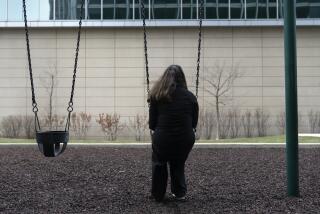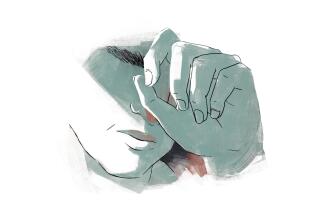Study Details Steep Rise in Depression Therapy
- Share via
CHICAGO — The number of Americans treated for depression soared from 1.7 million to 6.3 million from 1987 to 1997, and the proportion of those receiving antidepressants doubled, researchers say.
The researchers attributed the sharp increases to the emergence of aggressively marketed new drugs like Prozac, the rise in managed care and an easing of the stigma attached to the disease.
The study found that the share of patients who used antidepressant medication climbed from 37% to nearly 75%. At the same time, the proportion who received psychotherapy declined from 71% to 60%.
While an increase in treatment for depression was not surprising, “the size of the increase was larger than I think most people in the field expected,” said Dr. Mark Olfson, a psychiatrist at Columbia University and the New York State Psychiatric Institute who led the study. Studies since 1997 suggest the trend continues, he said.
“The increase in the treatment of depression cuts broadly across the population and extends to Hispanics and African Americans, people who are unemployed and uninsured,” Olfson said. “These changes reflect broader changes in attitudes toward the treatment of depression and a decrease in stigma.”
The study was an analysis of two national surveys. The findings appear in today’s issue of the Journal of the American Medical Assn.
The publicizing of newer antidepressants that have fewer side effects--such as Prozac, which was introduced in late 1987--has helped make patients more willing to seek treatment, the researchers said. This publicity has included pharmaceutical industry efforts to market the drugs directly to consumers and public-awareness campaigns about depression.
The rise in managed care also has contributed to the increase in use of medication, which may be less costly and time-consuming than psychotherapy, the researchers said.
Managed care also has placed more emphasis on primary care physicians, who may be more likely to prescribe medication than to refer patients to specialists for psychotherapy, said Ronald Kessler, a professor of health care policy at Harvard University who was not involved in the study.
Kessler said evidence shows that combining medication with psychotherapy is the most effective treatment for depression. While many of the patients studied received both, some clearly did not, and Kessler said the findings do not indicate whether patients received adequate treatment.
“What we don’t know about is the quality of the care people are getting, but there are reasons to suggest there are problems with quality,” said Harold Pincus, vice chairman for psychiatry at the University of Pittsburgh and one of the study’s authors.
Substantial numbers of patients receive a single prescription for medicines and don’t refill it, he said. Since the drugs often take a month to have an effect, one prescription is unlikely to do very much. But overburdened primary care doctors have no incentive to do the kind of long-term follow-up that chronic conditions like depression demand, which means that many patients may not be getting the best treatment.
The analysis is based on data from 34,459 people who participated in a 1987 medical expenditures survey by the U.S. Department of Health and Human Services. The researchers compared those findings with data from 32,636 participants in a similar 1997 survey by the Agency for Healthcare Research and Quality.
While the study shows “that the acceptance of a medical intervention for depression is clearly increasing, it still is significantly below what the potential need for care is,” said Dr. Darrel Regier, research director for the American Psychiatric Assn.
Other surveys have suggested that about 5% of the U.S. population--roughly 14 million people--could benefit from treatment for depression, but the study suggests that only about half that number are actually receiving care, he said.






